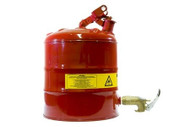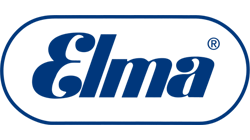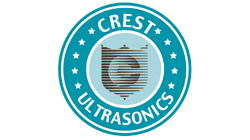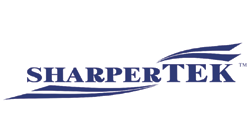Best Practices for Cleaning with Flammable Solvents
|
Let Us Help We can help you
find the perfect storage unit for your needs and budget. |
Tough cleaning jobs, examples provided below, often call for cleaning with flammable solvents. This can pose high risks if strict safety precautions are not followed. Because best cleaning results are often achieved using an ultrasonic cleaner, this post provides you with best practices for cleaning with flammable solvents using an ultrasonic cleaner.
But first,
What is a Flammable Solvent?
This is a good question.
Flammable solvents have different flashpoints. In brief, the lower the flashpoint the more flammable they are. This is important when cleaning with flammable solvents.
Fortunately there is help.
This table of common organic solvents includes flash points. Examples of low flash point flammable solvents are 1-propanol at 59⁰F (15⁰C), acetone at -4⁰F (-20⁰C) and toluene at 39⁰F (4⁰C).
Regulations Governing Cleaning with Flammable Solvents
As a general rule, whenever you install an ultrasonic cleaner for use with volatile solvents you must check with local public safety officials and your plant safety personnel to ensure compliance.
Your best overall source for compliance, in addition to your local and plant safety personnel, is the National Electric Code (NEC) and National Fire Protection Association (NFPA). These address issues related to Class, Division and group, ventilation, electrical cord, plug, and receptacle. This link to NFPA 30 provides more information on these issues.
By the way, the regulations are not limited to using these solvents in an ultrasonic cleaner.
Why Clean with Flammable Solvents?
Residue-free results is an example. There are many instances when flammable solvents such as IPA, acetone and toluene are used for cleaning parts that must be residue-free after the process. Here are some examples:
Surgical Implants. One of the most common applications is cleaning surgical implants. These are frequently cleaned using IPA. Reasons? It evaporates quickly, is relatively non-toxic, and residue-free but requires an explosion proof ultrasonic cleaner.
Stainless Steel Filters to remove ferrous contaminants using IPA or acetone.
Remove Machining Oils and Particulates from traveling wave tubes, xenon ion propulsion systems, electronic power conditioners and microwave power modules.
Small X-ray tube components are cleaned with a volatile solvent in an explosion-proof ultrasonic cleaner to yield absolutely contamination-free results. In an example using three steps the first step uses the solvent to remove oils that are deposited on the stainless/Kovar assembly.
Electronic Components. Printed circuit boards, motherboards and other electronic components may accumulate solder flux and other contaminants during manufacture that must be removed prior to shipment. PCB manufacturers may be requested to use a flammable solvent to accomplish this. The process is faster, safer and more thorough than using sprays and brushes, the latter of which could damage delicate soldered joints.
Regularly cleaning powder coating nozzles is an important procedure to maintain quality coatings. A supplier of powder-coated parts to the transportation industry uses an IPA solvent in an explosion-proof ultrasonic cleaner to thoroughly remove powder residues that accumulate on nozzles.
Three Options for Ultrasonic Cleaning with Flammable Solvents
1. SMALL PARTS BATCH CLEANING
If you need to clean small parts using a flammable solvent on an occasional basis rather than as a full-time procedure a solution is to isolate the solvent from the environment.
Carefully place the parts in a flask or beaker and add just enough solvent such as IPA to ensure they are fully immersed.
Loosely cover the container to minimize escape of vapor during the cleaning process.
In this instance you can use tap water with a surfactant in the ultrasonic cleaning tank. Before proceeding remember to degas the solution by running the cleaner for about 10 minutes without a load. Some ultrasonic cleaners are equipped with a degas mode to speed this process.
Flasks can be fixed into position in a mesh basket using flask clamps, and beakers can be supported using a beaker cover on the unit instead of a basket. Ultrasonic beaker kits are a great solution for this application.
In either case, the bottom 1-2 inches of the containers should be immersed in the water. The ultrasonic energy will penetrate the glass walls and cavitation action will occur in the IPA. At the conclusion of the process carefully remove the parts which, when dry, will be residue free.
Observe all safety precautions and operate the unit in a well-ventilated area.
2. LARGE-PARTS CLEANING WITH FLAMMABLE SOLVENTS
If you clean larger parts with flammable solvents on a regular basis consider an explosion proof ultrasonic cleaner.
Explosion-proof ultrasonic cleaners are designed to eliminate ignition points within the equipment itself that could ignite spilled solvent or fumes.
Ask us about the SOL XP explosion-proof units available in 6 tank capacities. This equipment is designed for use in Class I Division 1 hazardous areas.
These units have been well-received in the field. Examples include cleaning stainless steel filters to meet strict customer specifications and removing oils and particulates from piece parts and brazed assemblies.
3. CLEANING VERY SMALL PARTS WITH FLAMMABLE SOLVENTS
Extremely small parts such as watch parts, micro-optics, and micro-machined parts are very effectively cleaned, rinsed, and dried in the Elmasolvex VA ultrasonic cleaner.
This ultrasonic cleaner is certified to be explosion proof when used with solvents with a flash point ≥ 12°C (53⁰F). Optimum cleaning results are achieved using a combination of multi-frequency ultrasonic cleaning, oscillation, and vacuum technology. Cleaned parts are completely residue-free.
View this video for a short tutorial on how it works.
Need more Info on Cleaning with Flammable Solvents?
Call or chat with the professionals at iUltrasonic for unbiased help in specifying the correct ultrasonic cleaner you need to clean with flammable solvents.






